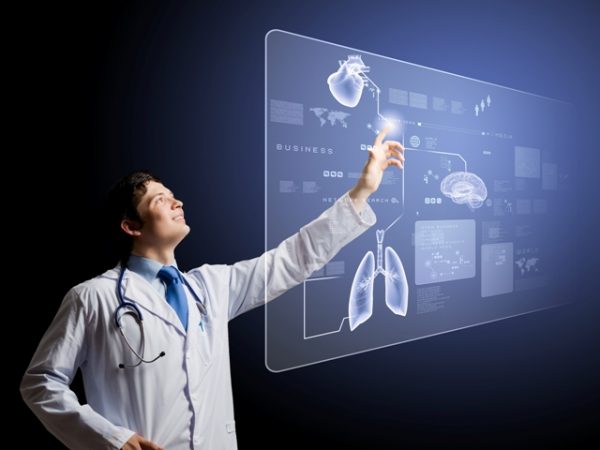Is Technology Bringing Us Better Healthcare?

Technology is a driving force. If you stop and think about technology in your own life, you will see just how much you rely upon it. Your obsession with it seems minimal, however, when we look at the world’s addiction and dependence upon it.
The world of healthcare, for example, is a prime example of this interdependency with technology. Although technology has saved countless lives, doctors and medical professionals may be relying too heavily on it, discounting their own gut instincts and medical training.
In this article, we will take a glimpse at a few of the technologies that are employed within the healthcare community, including their positive and negative benefits.
Electronic Medical Records/Electronic Health Records
Electronic Medical Records (EMR) and Electronic Health Records (EHR) have changed the way information is gathered, stored and shared within the healthcare system in a serious way.
According to healthIT.gov, an EMR “Contains the standard medical and clinical data gathered in one provider’s office.” An EHR, “Go beyond the data collected in the provider’s office and include a more comprehensive patient history.”
Those with medical transcription training aid in the collection of this data. It doesn’t matter which hospital, doctor, clinic, etc., a patient goes to, their EHR travels with them. As both types of records collect and store patient data, doctors can easily chart progression or digression of the patient’s health, which improves the overall diagnosis and health of the patient. In addition, hcc coding jobs are on the rise. If you want to pursue a career in this field, then you might want to consider taking up some Online Medical Coding Courses.
Although the flow of information is increasing doctor/patient communication, and indeed improving the overall health of a patient, there is also be the “but” factor. In an National Public Radio (NPR) article, the authors cited a recent study done by John Hopkins Medicine. According to the study, an estimated 250,000 patients die each year due to medical error. That death toll ranks just under heart disease and cancer, making it the No. 3 cause of death in the United States.
The death toll is chalked up to “Medical mistakes that can lead to death range from surgical complications that go unrecognized to mix-ups with the doses or types of medications patients receive.” The “mix-ups” with medications is definitely scary, as the EMR and EHR should clearly tell nurses and administrating professionals what to give their patients and how much to give them.
In addition, healthcare facilities may use a Back Office Healthcare Operations Software to better manage their data on costs and their patients.
Robotics
According to robotics.org, robots are being used in “Radiation treatment to eye surgery, rehabilitation to hair transplantation, and robot therapists to robotic pharmacists, and even a robot phlebotomist.” Robots have an inhuman ability for precision, which could decrease the medical death toll simply by alienating human error. Although far from replacing its human counterpart, robots are the future of medicine and could, one day, take the jobs of trained medical professionals.
An article written in the Huffington Post cites more challenges in healthcare robotics:
“Between 2007 and 2013, more than 1.74 million robotic procedures were performed in the U. S., most commonly in gynecology and urology, with 144 deaths (1.4 percent), 1,391 patient injuries (13.1 percent) and more than 8,000 device malfunctions (75.9 percent).”
3D Printing
This advancement in technology has been used for several years now, printing useable creations. Scientists and 3D printing companies are joining forces and transforming the way we think about medicine.
- Laser-printed skin cells are helping in advances to help create skin and tissue for burn victims
- Human organs used for transplants are being printed
- Artificial limbs for prosthetics (robotics and 3D printing)
- Robotic/3D printed Exoskeleton (helping those with paralysis)
- Membranes of living cells (like muscle or neurons)
Although this discovery makes you just pause for a moment and say, “Wow!”, there are always repercussions to new discoveries. A great deal of time and money will go into further developing 3D printed materials to be used in the world of medicine.
The healthcare system is a perfect example of a seemingly mutualistic relationship with technology. In some cases, however it’s more accurate to call the relationship symbiotic, as not every party is benefiting from the other. Technology will never stop and will only have an increased presence in the medical realm. Lives will be saved, but every positive reaction has negative ones, too; Time will tell what these will be. Visit sites like https://www.hingehealth.com/blog/digital-health-benefits-musculoskeletal-conditions/ to know more about digital health services.








